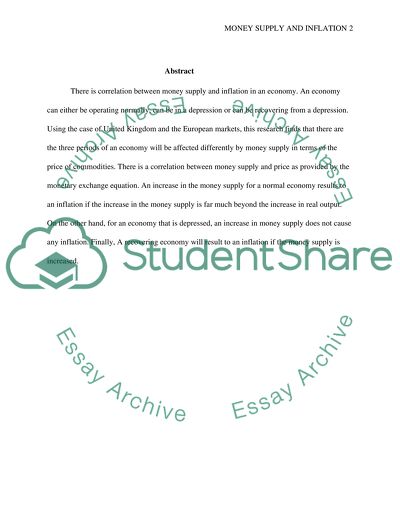Cite this document
(Determination of Money Supply and the Relationship between Money Research Paper, n.d.)
Determination of Money Supply and the Relationship between Money Research Paper. Retrieved from https://studentshare.org/macro-microeconomics/1630279-determination-of-money-supply-and-what-is-the-relationship-between-money-supply-and-inflation-a-comparative-case-study-between-uk-and-eu-market
Determination of Money Supply and the Relationship between Money Research Paper. Retrieved from https://studentshare.org/macro-microeconomics/1630279-determination-of-money-supply-and-what-is-the-relationship-between-money-supply-and-inflation-a-comparative-case-study-between-uk-and-eu-market
(Determination of Money Supply and the Relationship Between Money Research Paper)
Determination of Money Supply and the Relationship Between Money Research Paper. https://studentshare.org/macro-microeconomics/1630279-determination-of-money-supply-and-what-is-the-relationship-between-money-supply-and-inflation-a-comparative-case-study-between-uk-and-eu-market.
Determination of Money Supply and the Relationship Between Money Research Paper. https://studentshare.org/macro-microeconomics/1630279-determination-of-money-supply-and-what-is-the-relationship-between-money-supply-and-inflation-a-comparative-case-study-between-uk-and-eu-market.
“Determination of Money Supply and the Relationship Between Money Research Paper”, n.d. https://studentshare.org/macro-microeconomics/1630279-determination-of-money-supply-and-what-is-the-relationship-between-money-supply-and-inflation-a-comparative-case-study-between-uk-and-eu-market.


